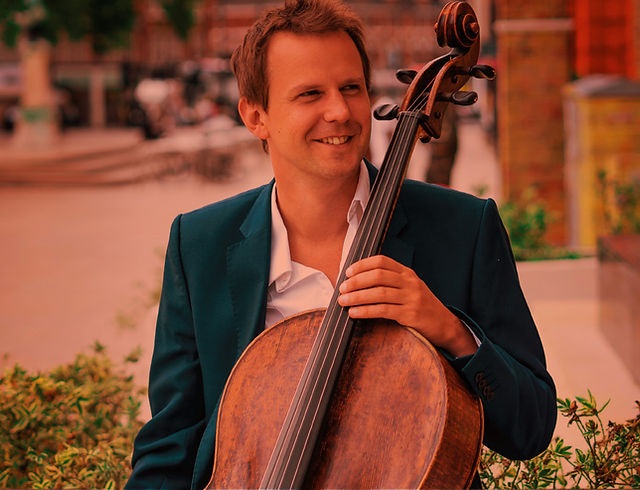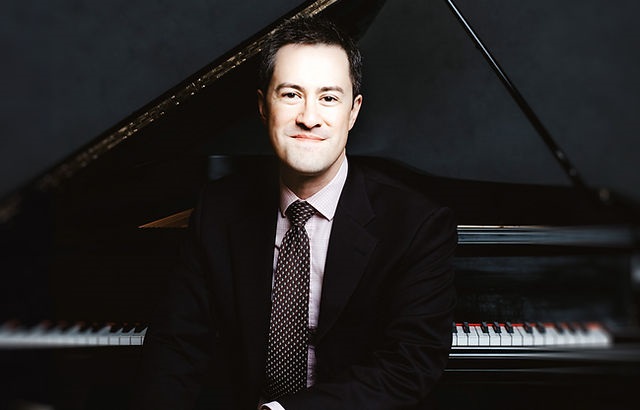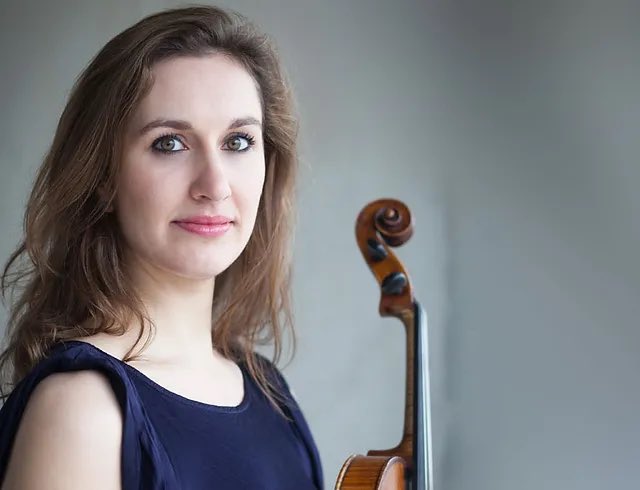
THE centenary of the death of French composer Gabriel Fauré will be marked by the York Chamber Music Festival from September 13 to 15.
“For the 2024 festival I have gathered together another crop of the best string players in the country, all playing at the top of their game,” says artistic director and cellist Tim Lowe. “The 2006 Leeds International Piano Competition second prize winner, American pianist Andrew Brownell, returns to us after a long absence too.
Lowe has assembled a festival line-up of pianist Brownell; violinists Ben Hancox and Magnus Johnston; viola players Gary Pomeroy and Simone van der Giessen; cellist Marie Bitlloch and flautist Sam Coles.
“Spotlighting the Fauré centenary, we will play his beautiful Piano Quartet No. 1 Op.15 – a piece that after the French defeat in 1871 at the end of the Franco-Prussian War led the renaissance of French musical culture and defined its distinctive sound-world,” says Tim.
“In his older age, his Second Cello Sonata is an amazingly youthful and life-affirming work for a composer in his late seventies and by then, sharing with Beethoven a composer’s worst nightmare, unable to hear, arguably, their greatest music.”
Lowe and Brownell will open the festival with a French-themed lunchtime cello recital at the Unitarian Chapel, St Saviourgate, on September 13 at 1pm, featuring Nadia Boulanger’s Trois Pièces for ‘Cello and Piano, Claude Debussy’s Sonata for Cello and Piano and Fauré’s Cello Sonata No. 2 in G minor, Op. 117.

“As the storm clouds of war gathered over Europe in 1914, Debussy was seriously ill with cancer but feeling it was his patriotic duty to compose,” says Tim. “The sonata is infused with progressive, 20th century harmonic language, which often ventures into exotic modes and the dreamy, time-altering magic of the pentatonic and whole tone scales. Yet under the surface lies a nostalgic classicism.
“Fauré, like Debussy, was physically frail. He was totally deaf when he wrote his last major works. He was 76 but what grips us immediately about this cello sonata is its youthfulness and exuberance. For anyone less spiritually centred than Fauré, these final years would have been a time of frustration but from his silent world he shares with us moments of transcendence.”
Hancox, Johnston, Pomeroy, van der Giessen, Bitlloch and Lowe will gather at the National Centre for Early Music, Walmgate, for the Friday evening concert: a 7.30pm programme of Haydn’s String Quartet in C Major Op. 33 No. 3 (The Bird), Tchaikovsky’s String Quartet No 1 in D Major Op. 11 and Dvořák’s String Quintet in E flat major, Op. 97.
“After a break of ten years, Haydn returned with renewed enthusiasm to writing string quartets,” says Tim. “The six new Op. 33 quartets toy with convention, surprise and delight us. He uses the title ‘Scherzo’ – Italian word meaning ‘joke’ – and there is indeed a lot of humour in these quartets. Op. 33 No. 3 Is known as ‘The Bird’ for good reasons!
“In 1871 Tchaikovsky decided to supplement his modest income from teaching and journalism by staging a concert of his own works in Moscow including this new String Quartet No.1 in D major; a youthful work and maybe his greatest chamber music. It was an unqualified success, showing the composer’s gift for melodic invention.
“While in America, Dvořák took his family on summer vacations into the countryside in Iowa. It was here, at Spillville, that he wrote masterpieces, among his finest works, embodying his intense love of chamber music, his mastery of the intricacies of the classical form and above all his revolutionary commitment to folk melody, which gives his music such a passionate emotional impact; joy unbounded.”

Lowe will team up with Coles and Brownell for From Classical To Romantic, the Saturday lunchtime concert of Carl Maria von Weber’s Overture to Euryanthe (arr. Hummel), Johann Nepomuk Hummel’s Adagio, Variations and Rondo on a Russian Theme, Op 78 and Weber’s Trio in G minor, Op 63, at the Unitarian Chapel at 1pm on September 14.
“The genius composer Hummel was a contemporary of Beethoven and Mozart,” says Tim. “Apart from his own brilliant music, he enjoyed arranging large works for small groups to meet the market for amateur players.
“For the Overture to Weber’s opera Euryanthe, Weber’s original brilliant orchestration is served surprisingly well by this arrangement; full of operatic character and tuneful.
“Writing variations based on a well-known tune has always been a familiar form of composition and Hummel’s facility for improvisation plays to this in the Adagio, Variations and Rondo. Here he uses a folk song and creates a series of wonderfully tuneful composition highlighting each instrument’s singing qualities.”
Tim continues: “The Weber trio sound to me more like an opera; full of arias and drama! The operatic master completed this masterly trio in 1819. In it we sense the Romantic era in the air. There is here a preference for composing display pieces for soloists, like operatic divas singing their hearts out in this wonderfully varied, joyful and above all tuneful piece!”
Hancox, Johnston, Pomeroy, van der Giessen, Bitlloch, Lowe and Brownell will focus on quartets on September 14 at 7.30pm at the Sir Jack Lyons Concert Hall, University of York, once the evening programme has opened with Debussy’s Prélude to the cantata La Damoiselle élue (The Blessed Damozel).

“Debussy read Pre-Raphaelite poet and painter Dante Gabriel Rossetti’s poem The Blessed Damozel(1850) and had an idea to compose a short cantata,” says Tim. “The synopsis is simple: ‘From the heights of paradise, leaning on a golden barrier, a young girl laments the absence of her lover. On Earth, the latter believes he feels her presence’.
“Debussy shows us his wonderful gift for fleeting moments of sensuality. The Prélude to the cantata is brilliant realised in this arrangement for piano and strings by John Lenehan.”
Next comes Fauré’s beautiful early work, the optimistic Piano Quartet No. 1 in C minor Op. 15. “Joining the search for a renaissance of French musical culture, especially after the French defeat in the Franco-Prussian War (1871), Fauré defined some of the core elements of this new distinctively French ‘voice’ in his Piano Quartet,” says Tim.
“The use of piano arpeggios and other broken figures to establish a sort of fluid counterpoint on which the music seems to float; resourcefulness in unexpected harmonic changes and Fauré’s genius for melodic invention – subtle, filigree melodies that seem to grow sinuously out of his harmonic scheme.”
The concert will climax with Brahms’s Piano Quartet in G Minor, Op. 25, noted for its joyous gypsy finale. “The Piano Quartet in G Minor is one of the first works of Brahms’s unique flowering, freed from the shadow of Beethoven,” says Tim. “It is a work of huge proportions and despite its quite congenial surface has an inner story with everything constructed on thematic material that is without precedent in chamber music.
“Schoenberg describes this method of composition as preparing the way for atonality. Brahms’s epic Piano Quintet covers a musical canvas with a clarity and newness that had not been heard before.”
Hancox, Johnston, Pomeroy, van der Giessen, Bitlloch and Lowe will be the players for the festival closing Sunday afternoon concert of Mozart’s String Quintet in C minor, K 406, and Brahms’s String Sextet No. 1 in B-flat major, Op. 18 on September 15 at 3pm at St Olave’s Church, Marygate Lane.

“Mozart in the final years of his short life struggled with money,” says Tim. “The String Quintet in C minor, K 406 is the composer’s own arrangement of a Wind Serenade, K. 388, for two oboes, clarinets, horns and bassoon designed to be advertised alongside two original quintets with the aim of repaying some of his debts.
“Such is Mozart’s finesse with the transcription that, without knowing the back story, it would not be apparent that the quintet was not in its original form. It is a somewhat moody piece, but its inner complexity comes to a joyful open-air ending.”
Tim continues: “The dominance of Beethoven in virtually every genre was so complete that no composer could escape comparison to the departed master. The young Johannes Brahms felt this very acutely; he destroyed three quarters of his chamber music until he found this own voice, which he knew lay within.
“One solution was to use instrumental groups Beethoven didn’t touch. When Clara Schumann heard it she remarked, it was even more beautiful than I had anticipated, and my expectations were already high’.
“Spared the burden of Beethoven’s ghost, the new sextet – and its young creator – scored a success. It is one of his most glorious works; tuneful, colourful and inventive. Above all using the six voices with creativeness and melding them into a wonderful ochre acoustic – a wash of sunset sound.”
Summing up the festival, Tim says: “Come and hear duos, trios, quartets and quintets, finishing up on the Sunday afternoon with the wonderfully life-affirming Brahms String Sextet, Op.18, one of his greatest works and a turning point in his career.”
Visit ycmf.co.uk for the full festival details and to book tickets.
